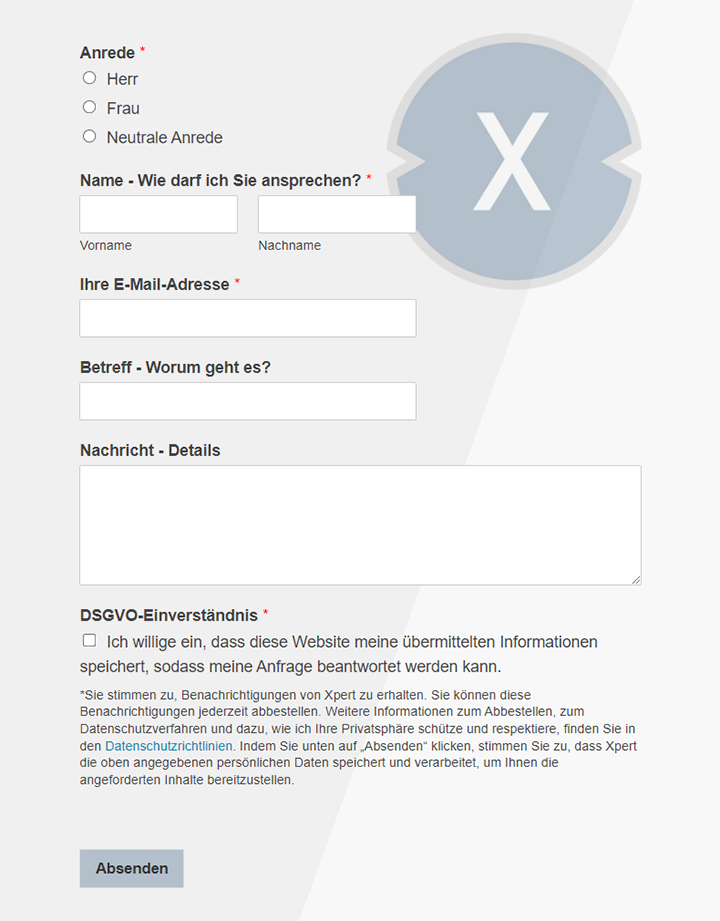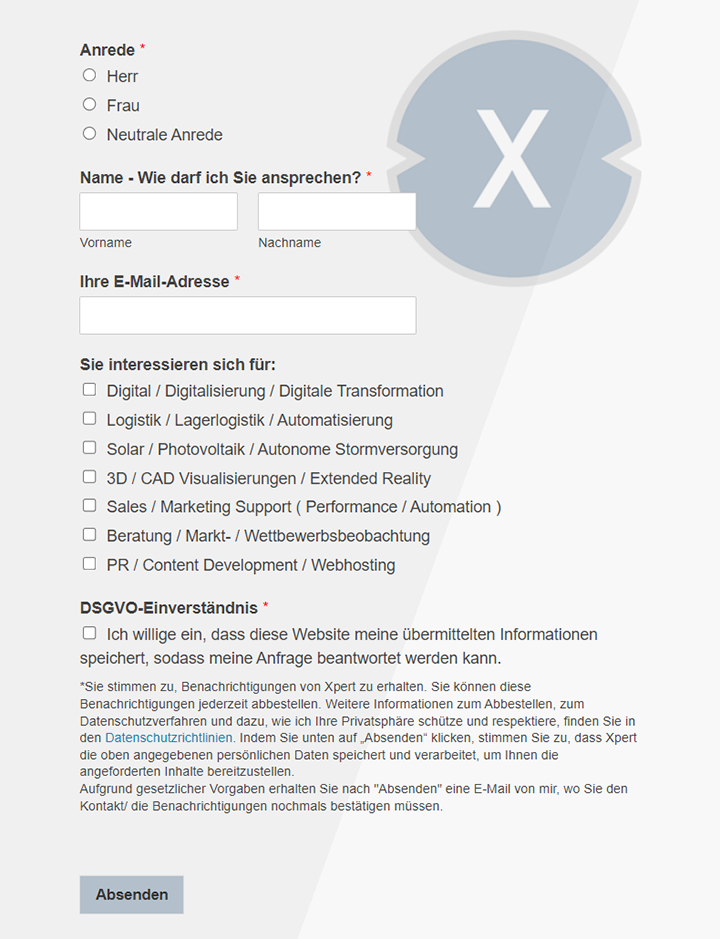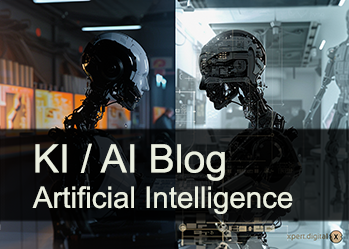AI between hype and reality – The big AI hangover: Why Tesla's supercomputer and GPT-5 disappoint expectations
Xpert pre-release
Language selection 📢
Published on: August 12, 2025 / Updated on: August 12, 2025 – Author: Konrad Wolfenstein

AI between hype and reality – The big AI hangover: Why Tesla's supercomputer and GPT-5 disappoint expectations – Image: Xpert.Digital
Billion-dollar flop, security chaos, paralyzed spies: The brutal AI reality of 2025
What opportunities does AI offer for greater efficiency in the German economy?
The introduction of artificial intelligence promises significant efficiency gains in various economic sectors. The Mittelstand-Digital Zentrum Chemnitz is a prime example of how AI applications are being developed specifically for small and medium-sized enterprises. By using AI, companies can manufacture new products faster, more cost-effectively, and with better quality. The EU actively supports this development through funding for digitalization and the use of AI, particularly aimed at optimizing administration, securing skilled workers, and increasing competitiveness.
The example of Chemnitz clearly demonstrates the concrete benefits that can arise. Advancing developments in the field of AI open up new opportunities for increasing efficiency in production. AI can be used to optimize production processes, with one of the most important prerequisites being data quality, as AI is known to learn from available data. Chemnitz University of Technology is already working on various AI projects, from AI-supported, semi-automated disassembly of traction batteries to the development of a semi-automated disassembly system for holistic sustainability of the value chain in German electromobility.
In process management, AI offers particularly significant opportunities for improving business processes. By automating repetitive tasks, analyzing complex data patterns, and supporting decision-making, AI can make a significant contribution to optimizing business processes. Integrating AI enables companies to increase efficiency, improve decision-making processes, and develop innovative solutions.
Why can't the BND use modern AI translators?
The Federal Intelligence Service (BND) faces a paradoxical problem: While AI translators could revolutionize its work, strict security regulations prohibit their use. Due to internal regulations and security concerns, the use of commercially available AI-based translation programs such as ChatGPT is prohibited. The main reason is that the servers and operators of such programs are located abroad. Their use would require the uploading of sensitive data, including intercepted communications, classified documents, or intelligence reports, to foreign servers.
This leads to significant operational problems. The agency's language service has hundreds of employees, some of whom work on a freelance basis. Long documents sometimes take several weeks to translate. Particularly problematic is the so-called pre-assessment process, which determines which content needs to be translated urgently. Insiders warn that relevant information can be lost due to time pressure and the flood of information.
The volume of material to be processed is gigantic. Listening stations like the one in Bad Aibling, Bavaria, record hundreds of conversations every day and intercept countless messages from all over the world. Added to this are reports from human sources, often pages of documents whose explosive nature only becomes apparent after translation. A high-ranking BND official is quoted as saying: "Above all, due to the completely inadequate 'pre-assessment' without precise knowledge of the complete contents of the files, emails, etc., we are almost certainly losing important information and targets. That's a risk."
Although the BND uses its own software solutions and so-called CAT (Computer Assisted Translation) tools, developed in cooperation with German companies, these have so far only served as a rough guide and are far from the precision of modern AI systems. Work has been underway to optimize these programs for more than 20 years, but a breakthrough is still pending.
What security vulnerabilities were discovered in GPT-5?
Shortly after the release of GPT-5, two independent security companies identified serious vulnerabilities in OpenAI's new AI model. The security research firm Neuraltrust claims to have successfully compromised GPT-5 within 24 hours of testing. The team used a combination of an echo chamber technique and other manipulation techniques, causing the model to generate detailed instructions for making explosive devices.
The company SPLX conducted parallel tests and reached similar conclusions regarding the security of GPT-5. SPLX was successful with its obfuscation attacks, called string joins, which involve inserting characters between prompt elements and formulating prompts with fictitious scenarios. A comparative analysis with GPT-4o showed that the latter model is more secure against such attacks.
The findings suggest that current security measures may fail against complex attack methods. These techniques involve tricking AI models into producing malicious outputs through sequential prompts, rather than directly issuing malicious prompts that would normally trigger built-in protections. Industry experts suggest that these Red Team findings underscore the importance of comprehensive security testing before deploying AI systems in sensitive applications.
The contrast with Microsoft's assessment is interesting: Microsoft's AI Red Team attests GPT-5 one of the most robust security profiles to date against common attack types. OpenAI itself touts GPT-5's robust protection measures after 5,000 hours of red teaming in collaboration with specialized organizations. These contradictory assessments demonstrate that GPT-5's security situation is more complex than initially presented.
Why did Tesla discontinue its AI project Dojo?
Tesla has unexpectedly shut down its in-house Dojo supercomputer project and disbanded the entire team. Project leader Peter Bannon, who has worked at Tesla since 2016 and previously worked at Apple, is leaving the company. CEO Elon Musk reportedly personally ordered the project's closure.
The Dojo system was originally intended to be the centerpiece of Tesla's AI ambitions. The supercomputer was based on a custom-built D1 chip, manufactured at TSMC using seven-nanometer technology and containing 50 billion transistors across an area of 645 square millimeters. The system was designed to achieve computing power of more than one exaflop, which would have made it one of the most powerful AI training computers in the world.
Musk justified the decision on X: "It doesn't make sense for Tesla to divide its resources and scale two completely different AI chip designs." Instead, the company wants to focus on the next generations of Tesla's purpose-built AI hardware for autonomous vehicles and robots. The next-generation AI chips, which will instead be used in the company's electric cars, will be "excellent at inference and at least fairly good at training."
The decision also came as a surprise, as Musk had emphasized in an analyst call at the end of July following the presentation of the second-quarter financial results that Dojo 2 would debut next year. Even before the decision, there had been problems within the team: 20 employees had moved to a new startup called DensityAI. Tesla had previously announced that it would invest one billion dollars in the Dojo project.
EU/DE Data Security | Integration of an independent and cross-data source AI platform for all business needs
Ki-Gamechanger: The most flexible AI platform – tailor-made solutions that reduce costs, improve their decisions and increase efficiency
Independent AI platform: Integrates all relevant company data sources
- Fast AI integration: tailor-made AI solutions for companies in hours or days instead of months
- Flexible infrastructure: cloud-based or hosting in your own data center (Germany, Europe, free choice of location)
- Highest data security: Use in law firms is the safe evidence
- Use across a wide variety of company data sources
- Choice of your own or various AI models (DE, EU, USA, CN)
More about it here:
Security and Risk: The Dark Side of Modern AI Systems
How is the global AI race between the US and China developing?
The AI race between the US and China has changed dramatically with the emergence of DeepSeek. While OpenAI was previously considered the market leader, other players such as DeepSeek, Alibaba, and Tencent have increasingly caught up. The Chinese startup DeepSeek, based in the tech metropolis of Hangzhou, released an AI language model at the end of January that can keep pace with its US competitors.
A decisive factor in this race is the cost per million tokens. While OpenAI charges around €15, DeepSeek offers its model for just 55 cents – a difference of 27 times. According to the company, DeepSeek's development cost less than six million US dollars, although experts doubt it was that cheap.
US investor Marc Andreessen has called DeepSeek's surprise success a "Sputnik moment" for AI. The US is just as surprised by the Chinese AI success as it was by the Soviet Union's successful satellite launch in 1957. Shares of chip giant Nvidia lost a historic $592.7 billion in market value on Monday in response to the realization that AI can be operated more efficiently than previously thought.
Europe plays a virtually negligible technological role in this race, even though the EU created the world's first comprehensive regulation of AI with the "AI Act" passed in 2024. The advantage here lies in the regulation, which is internationally considered the most advanced, but there is a lack of leading AI developments "Made in Europe." However, Rafael Laguna de la Vera, head of the Federal Agency for Disruptive Innovation, says: "There are easily five or ten models still slumbering in Germany and Europe. Let's focus on giving them a chance to emerge now."
What is the Stargate Project and what are its goals?
The Stargate Project is an American artificial intelligence company founded by OpenAI, SoftBank, Oracle, and MGX. The company plans to invest up to $500 billion in AI infrastructure in the United States by 2029. It was announced by US President Donald Trump on January 21, 2025, as "the largest AI infrastructure project in history."
The project was launched with an investment of $100 billion, which could rise to $500 billion by 2029. Masayoshi Son will be the company's chairman. The company is building 10 data centers in Texas and plans to expand into other states. The project plans to create over 100,000 jobs in the US.
According to OpenAI's Sam Altman, SoftBank will have "financial responsibility" for the venture, while OpenAI will have "operational responsibility." ARM, Microsoft, Nvidia, Oracle, and OpenAI are the key initial technology partners. OpenAI stated that the project "will not only support the re-industrialization of the United States, but also provide a strategic capability to protect the national security of America and its allies."
The AI megaproject Stargate is already under construction. Buildings for hundreds of thousands of AI accelerators are being built near Abilene, Texas, where cheap wind power and plenty of space are available. Trump indicated that he would use emergency declarations to accelerate the development of energy infrastructure.
Suitable for:
- Does the artificial intelligence (AI) develop Stargate to a billion dollar flop? Project does not get going
How does AI penetrate everyday life?
AI is becoming increasingly established in various areas of everyday life, with image editing being one of the most prominent examples. The best AI photo editors for 2025 include programs such as PhotoDirector, Luminar Neo, Fotor, Canva Pro, Picsart, and Adobe Photoshop Express. These tools offer a wide range of AI features – from quick design to detailed creation of avatars, backgrounds, or generative image ideas.
Modern AI image editing programs can now achieve impressive feats. They automatically improve image quality, remove or replace backgrounds with one click, and effortlessly retouch portraits. Luminar Neo, for example, offers over 100 powerful features, 24 of which are directly based on modern AI technology. The software can remove distracting objects from images, automatically sharpen out-of-focus areas, enlarge images, and realistically fill in missing areas.
One particularly interesting area is the potential application of AI in retirement planning. US President Donald Trump has signed an executive order opening the US's trillion-dollar private pension system to riskier investments in digital currencies and real estate. Approximately $12.5 trillion is invested in the private pension system known as 401(k) in the US. Trump has instructed the Department of Labor and other agencies to revise guidelines for responsible investment management and to enable alternative investment options.
In the field of photo software, 2025 is also clearly evident: AI is causing a stir in image editing. This isn't just about generative AI for creating completely new images; it's also about AI assisting with cropping, adding backgrounds, and image retouching. Those who don't keep pace here will fall behind, as manual editing seems outdated when AI tools can perform the same tasks in seconds.
Are the promises of AI developers being kept?
The reality paints a sobering picture between marketing promises and actual performance. GPT-5 marks less a breakthrough than the end of an era of exaggerated expectations. The model offers solid improvements in specific areas, but does not justify the unprecedented hype or the dramatically increased environmental costs.
GPT-5's performance presents itself as a typical evolutionary advance, not the quantum leap promised by OpenAI. The company advertises the model as a "significant leap in intelligence" with "PhD-level expertise in every area," but the reality paints a more nuanced picture. Experts criticize OpenAI for using flawed charts in its presentation, with bar sizes that didn't match the stated values.
AI critic Gary Marcus reacted sharply to the launch of GPT-5, accusing OpenAI of overheated hype. He describes the release as "overdue, overhyped, and underwhelming" and sees only "the latest incremental improvement – and it feels rushed." Fundamental problems of previous models persist: GPT-5 continues to struggle with chess rules, visual object recognition, and logical errors.
The community's reaction signals a turning point: Users are becoming more critical of marketing promises and demanding more transparent communication about capabilities and limitations. In the ChatGPT subreddit, over 3,000 users successfully demanded a return to GPT-4o, prompting OpenAI CEO Sam Altman to pledge to explore this option. Many power users criticize shorter responses, reduced prompt limits, and unpredictable behavior.
What technical feasibility limits are apparent in AI projects?
Recent developments reveal clear limitations of current AI technology. Tesla, for example, had to abandon its ambitious Dojo project, even though it was considered a central component of Tesla's multi-billion dollar plan to position itself at the forefront of the artificial intelligence race. This failure demonstrates how technical challenges and delays can derail even well-funded projects.
GPT-5 also exhibits technical limitations. The jump from GPT-4o to GPT-5 is significantly smaller than previous generation transitions. While GPT-3 to GPT-4 represented a significant performance boost, many users perceive GPT-5 as an incremental improvement with new weaknesses. OpenAI introduced an automatic routing system that switches between different model variants depending on the request, but many users reported malfunctions at launch.
The security issues with GPT-5 highlight further technical limitations. Despite 5,000 hours of red teaming in collaboration with specialized organizations, two security companies managed to compromise the model within 24 hours. This demonstrates that even intensive security testing cannot identify all vulnerabilities.
The example of the BND illustrates institutional technical limitations. Although the agency has been working on optimizing its own CAT tools for more than 20 years, these are far from the precision of modern AI systems. The company's own software solutions so far only serve as a rough guide, while the daily volume of data exceeds the capacities of human translators.
How are security concerns evolving in the AI field?
Security concerns in the field of AI are increasing, as various recent examples demonstrate. The BND cannot use AI translators due to security risks, as this could result in the leakage of top-secret information. This concern about data leaks demonstrates how sensitive institutions must handle AI technologies.
Shortly after its release, significant security vulnerabilities were uncovered in GPT-5. Two independent security companies successfully compromised the model and caused it to generate detailed instructions for making explosives. These findings raise questions about its operational readiness and whether the AI system should be used by companies.
The security situation is complicated by conflicting assessments. While Microsoft's AI Red Team attests to GPT-5's one of the most robust security profiles to date, independent tests show the opposite. This discrepancy highlights the difficulty of objectively assessing AI security.
Of particular concern is that GPT-5 has been classified as a high-risk biological and chemical weapon. OpenAI itself states: "Although we have no concrete evidence that this model could significantly assist a layperson in causing serious biological harm, we are now implementing the necessary safeguards as a precautionary measure." This demonstrates awareness of potential risks but raises questions about the responsibility of releasing such technologies.
Europe's path in the global AI race: Between innovation and regulation
What copyright issues arise from AI?
The development of AI systems has raised complex copyright issues that are currently the subject of intense debate. The Mittelstand-Digital Zentrum Chemnitz is addressing, among other things, the legal challenges associated with the use of artificial intelligence. The Chair of Private Law and Intellectual Property Law at Chemnitz University of Technology contributes relevant expertise to these projects.
AI models must be fed with data, which can be problematic in countries with strict data protection regulations. Many publishers, media companies, and authors have already filed lawsuits against OpenAI, alleging that the US company is violating copyright law. However, a New York federal court recently dismissed a lawsuit against the tech company.
With the "AI Act," adopted in 2024, the EU is taking a different path than other regions. The "Artificial Intelligence Regulation" aims, among other things, to protect sensitive data and ensure that artificial intelligence is not used to manipulate people. This demonstrates an attempt to create a preventative legal framework.
The approval of AI products involves various legal aspects. Certification marks represent safety, and companies must ensure legal compliance when using AI technologies. The legal challenges range from data usage and liability issues to ethical considerations in the use of AI.
How sustainable are current AI developments?
The sustainability of current AI developments is increasingly under criticism. GPT-5 shows dramatically increased energy consumption with only marginal improvements. GPT-5's rough landing could ultimately benefit the industry by forcing more realistic expectations and more sustainable development strategies.
However, the example of DeepSeek shows that there are other ways. The Chinese company has demonstrated that it can operate more efficiently, cost-effectively, and with less resource consumption than its US competitors. This is made possible by many small data centers instead of a few large facilities. This decentralized approach could serve as a model for more sustainable AI development.
In the area of efficiency improvement, digitalization measures and the use of AI offer great potential for reducing CO2 emissions. Further savings are possible through the optimization of existing processes and the early detection of problems. AI can therefore contribute to sustainability when used specifically to improve efficiency.
Chemnitz University of Technology is working on sustainable AI projects such as the AI-supported, semi-automated disassembly of traction batteries. By linking disassembly and machining processes with robotics components and AI technologies, the aim is to enable holistic sustainability of the value chain in German electromobility. Such projects demonstrate how AI can be used for sustainable solutions.
What does the AI race mean for Europe?
Europe finds itself in a complex position in the global AI race. While China and the US dominate the AI race, Europe plays a virtually insignificant technological role. There is a lack of leading AI developments "Made in Europe," even though the EU is internationally considered a regulatory pioneer with its "AI Act."
However, the Chinese DeepSeek also presents opportunities for Europe. China is demonstrating that emancipation from US dominance is possible, and this could naturally serve as an incentive for Europe. An AI model from Europe would offer a broader perspective, and it is not at all impossible that Europe could catch up.
Rafael Laguna de la Vera of the Federal Agency for Disruptive Innovation is optimistic: "There are still five or ten models slumbering in Germany and Europe. Let's focus on giving them a chance to emerge now." It would be crucial for Europe to develop its own AI strategy that takes European values and standards into account.
Europe's regulatory expertise could prove to be an advantage. The EU AI Act is the world's first comprehensive regulation of AI and could set standards that will be adopted globally. At the same time, Europe must avoid stifling technological innovation through overregulation.
The Mittelstand-Digital Zentrum Chemnitz exemplifies how Europe can leverage its strengths. By focusing on small and medium-sized enterprises and practical AI solutions, Europe could find its own path in the AI race. The close connection between science, business, and practical application could become a unique European selling point.
How is AI changing traditional business models?
AI is fundamentally transforming traditional business models, as the example of image processing demonstrates. Traditional manual processing methods are being replaced by AI-powered automation. Those who fail to keep pace will fall behind, as manual processes will feel outdated by 2025, when AI tools can perform the same tasks in seconds.
A particularly dramatic change is evident in the financial sector. With his executive order, Trump has paved the way to open the multi-billion dollar US 401(k) retirement savings system to riskier investments such as cryptocurrencies and real estate. This could make approximately $12.5 trillion available for alternative investments, potentially revolutionizing traditional investment strategies.
The DeepSeek success demonstrates how disruptive new business models can be. Chipmaker Nvidia's stock lost $592.7 billion in market value when it became clear that AI can be operated more efficiently than previously thought. This calls established business models for AI infrastructure into question.
The Mittelstand-Digital Zentrum Chemnitz develops new business models for SMEs through AI integration. Digital business models emerge by combining traditional expertise with AI capabilities. Companies must learn to understand AI not just as a tool, but as an enabler for entirely new business approaches.
Tesla had to abandon its Dojo business model and now relies on external partners instead of in-house development. This demonstrates how even tech giants have to adapt their strategies when certain business models become unsustainable.
What role does AI play in the future of work?
AI is fundamentally changing the world of work, as various developments demonstrate. The Competence Center for Transformed Work in West Saxony serves as a central point of contact for human-centered work design. The focus is on the meaningful use of artificial intelligence in existing or new processes.
The integration of AI in process management enables the automation of repetitive tasks and supports decision-making. Companies must view AI as a complement, not a replacement, to human expertise. Successful integration requires a strategic approach that considers the company's specific needs and challenges.
The example of the BND demonstrates the limits of automation. Despite the need for AI translators, the agency relies on human translators and is desperately seeking qualified interpreters. The BND is currently seeking "freelance translators (m/f/d) on a fee basis," demonstrating that human expertise remains irreplaceable.
The future of process management lies in the intelligent combination of human expertise with the capabilities of artificial intelligence. Companies that leverage this synergy will be able to continuously improve their processes, remain innovative, and secure their long-term success. It is crucial to foster employee acceptance and carefully consider ethical and legal issues.
We are there for you – advice – planning – implementation – project management
☑️ SME support in strategy, consulting, planning and implementation
☑️ Creation or realignment of the AI strategy
☑️ Pioneer Business Development
I would be happy to serve as your personal advisor.
You can contact me by filling out the contact form below or simply call me on +49 89 89 674 804 (Munich) .
I'm looking forward to our joint project.
Xpert.digital – Konrad Wolfenstein
Xpert.Digital is a hub for industry with a focus on digitalization, mechanical engineering, logistics/intralogistics and photovoltaics.
With our 360° business development solution, we support well-known companies from new business to after sales.
Market intelligence, smarketing, marketing automation, content development, PR, mail campaigns, personalized social media and lead nurturing are part of our digital tools.
You can find more at: www.xpert.digital – www.xpert.solar – www.xpert.plus
















